Analysis
The Loss of Chevron Could Also Be a Major Loss for Animals
Law & Policy•6 min read
Reported
Award-winning photojournalist Jo-Anne McArthur discusses Canada's latest ag-gag law and how the industry's ongoing attack on journalists and activists is impacting her work.
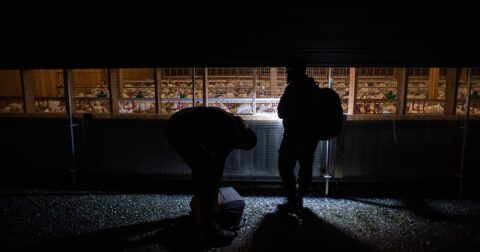

Words by Matthew Zampa
In April, Manitoba became the fourth province in Canada to pass ag-gag laws. The new law is part of a growing trend in the animal agriculture industry to silence its critics and protect big meat and dairy companies and their interests at all costs. Shielding agribusiness from the public eye, ag-gag laws allow farmers to operate in virtual secrecy, leaving journalists and activists to seek out more creatives ways to expose the truth about what goes on inside factory farms.
Canada has a long history of ag-gag legislation, with similar laws on the books in Alberta, Ontario, and Prince Edward Island. We spoke with Jo-Anne McArthur, an award-winning photojournalist who covers factory farming and animal exploitation in Canada and around the world, about how the new laws are impacting her work.
Matthew Zampa: If the new ag-gag law in Manitoba tells us one thing, it’s that the relationship between Big Ag and the federal government is changing. They’re working together to silence journalists and activists, now more than ever. Where is this new effort coming from, and what are they protecting?
Jo-Anne McArthur: In Manitoba, Bill 62 was brought forward by Blaine Pedersen, the Minister of Agriculture and Resource Development of the Progressive Conservatives. It criminalizes interactions with animals on transport trucks, and steepens penalties for trespassing and lying on farm job applications. Federally, with Bill C-205, it’s the Conservatives with the help of the NDP and BQ introducing ag-gag. The claim is always about biosecurity, but never, not once, has an activist or journalist caused a documented biosecurity outbreak in Canada.
In fact, it’s through journalism and activism that we learn how biologically dangerous industrial farms are. Our visuals regularly reveal overcrowding, abandoned dead animals, animals standing or lying for hours in excrement, animals with untreated open wounds—the list goes on. SARS, MERS, Nipah, avian and swine flu, mad cow disease, foot and mouth disease, and probably COVID—all caused by our confinement of animals and industry practices. It’s factory farms that pose a health risk to animals and the Canadian public, not us. We expose it.
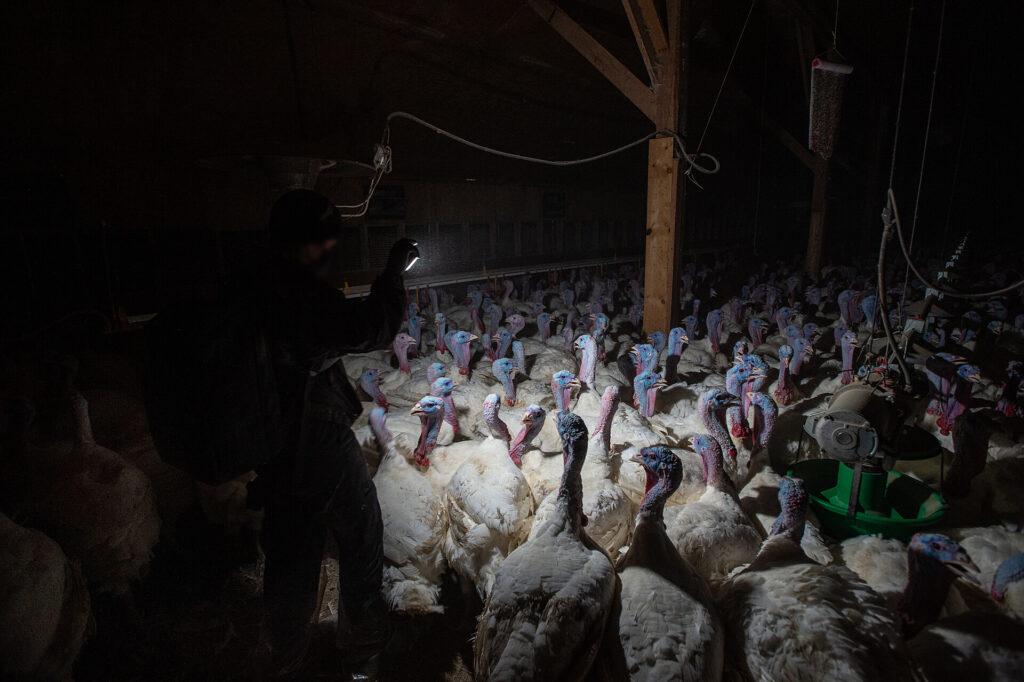
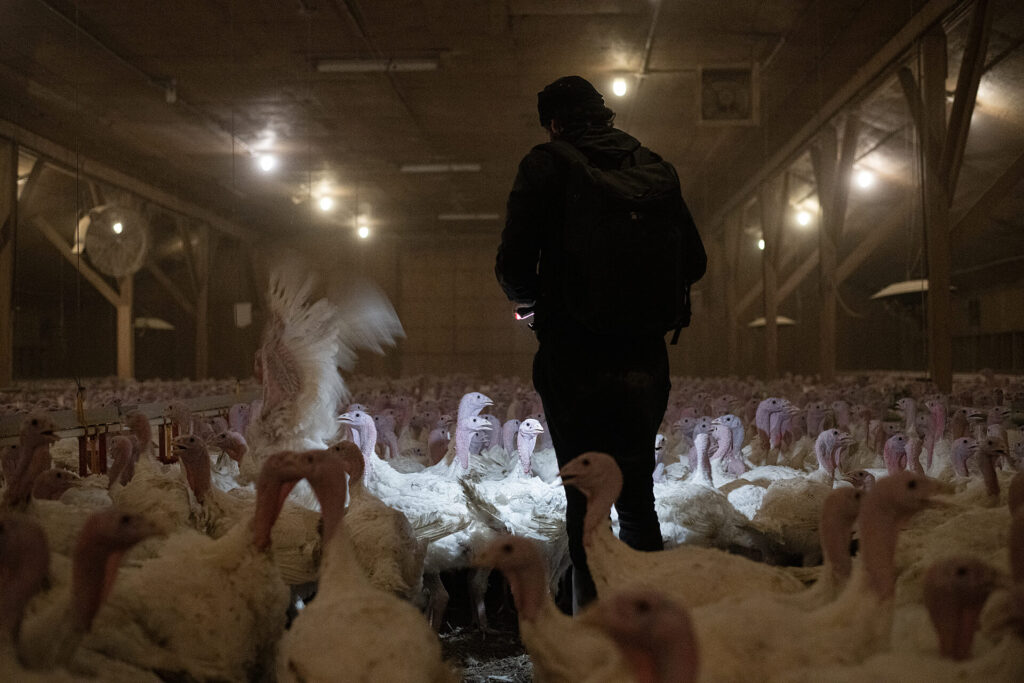
Ultimately I think this push comes from industry lobbying and politicians throwing red meat at their base by “protecting” farmers against so-called animal rights fanatics. They worry that our documentation and campaigns will change hearts and minds. This means less profit.
Matt: Why are Canada’s new ag-gag laws so problematic?
Jo: For so many reasons! These bills wade into ugly limits to free speech and expression. That’s why they face Charter Challenges. They limit the work of people who want to document what’s happening to hundreds of millions of animals in Canada. They limit peaceful activism.
Governments passing these bills are warning journalists and activists to back off, that the interests of factory farm owners are more important than the public’s interest to know what we do to animals. Ag-gag laws affect all journalists—limits to expression on one subject foreshadows limits in others.
Ag-gag turns the attention towards journalists and activists who hope to expose animal cruelty, and away from the cruelty itself. This reinforces Canadian misconceptions that cruel farm practices occur elsewhere and not here. They occur everywhere.
Matt: How have you personally been affected by ag-gag laws?
Jo: I’ve recently chosen to shoot more in provinces that haven’t enacted legislation like this. However, I will continue to shoot in ag-gag provinces with additional care. These stories are just too important, and if ag-gag in the US is any indication, these provincial laws will eventually be overturned within a few years by supreme courts for violating Charter rights.
As of this moment, I’ve not faced fines or arrest as a result of ag-gag in Ontario. If that should happen, we (We Animals Media) would use it as an opportunity to highlight—in court and to the media—the practices concealed at farms, and how the law keeps Canadians in the dark. It would be really bad for a Canadian factory farm if they brought a case against me.
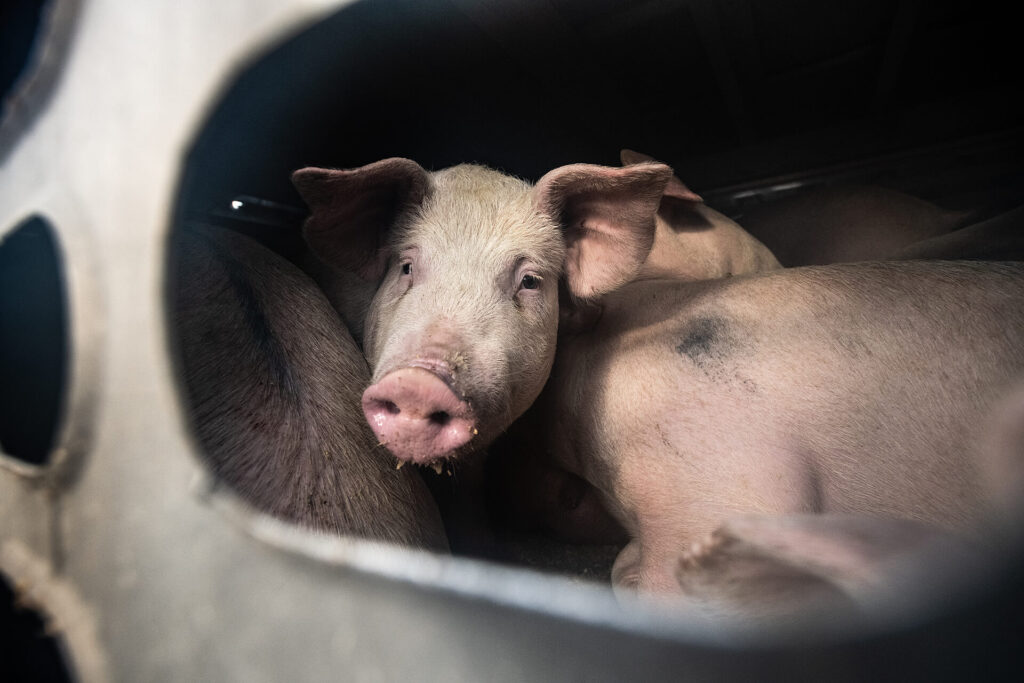
Matt: You’ve been able to shine a light on a side of the farming industry that most people never get to see. Why do you think seeing what goes on inside factory farms is so important?
Jo: When people see—as opposed to just read about—the conditions that animals are living and dying in on industrial farms, they recoil. You get an instant grasp of scale, cramped conditions, and you get to see the individuals we think of as wings, ribs, flank, veal. What ends up on our plate had a past! There’s so much we don’t think about when we interact with animal parts. We need images to show that egg-laying hens are crammed into cages. They can’t spread their wings. They stand on the dead bodies of other hens to alleviate the discomfort of standing on mesh flooring. We need to see that sows live on ammonia-slick floors and that their crates are so small they can’t even turn around. The green-pastured farms of old are the exception, not the rule. Industrial farming aims to maximize profit by minimizing space and effort. I’ve traveled to over 60 countries to document our relationships with animals. I can attest that farms are very unhappy places for billions of living beings. The images I shoot educate and change people and in the long term, slowly but surely, usher us towards a more compassionate and inclusive world.
Industrial farms feed Canadians and should be transparent. But then, if they were, they would have to drastically change. People wouldn’t stand for it.
Matt: What is your relationship with farm owners like? How do they react when you show them your photos?
Jo: Not surprisingly, I don’t go out of my way to show them my photographs. Ultimately I am trying to expose industries, not farmers. Farming industries now look the same globally. If they are smaller in some countries, they are catching up. And there are advancements, still, in how to scale up, which we see in China for example in what they call “hog hotels,” which are built vertically.
Some farmers and slaughterhouse owners welcome me, agreeing that people need to know how their food is produced. This, however, is not often the case, which is why so many investigators and journalists have to find other ways to tell this story. Access can be difficult, and now with ag-gag, illegal.
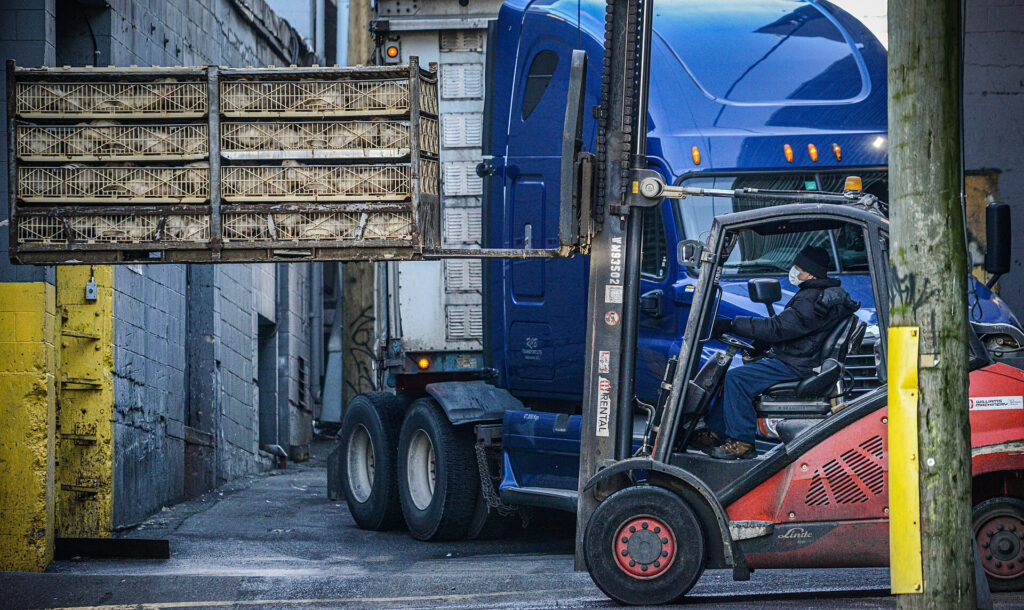
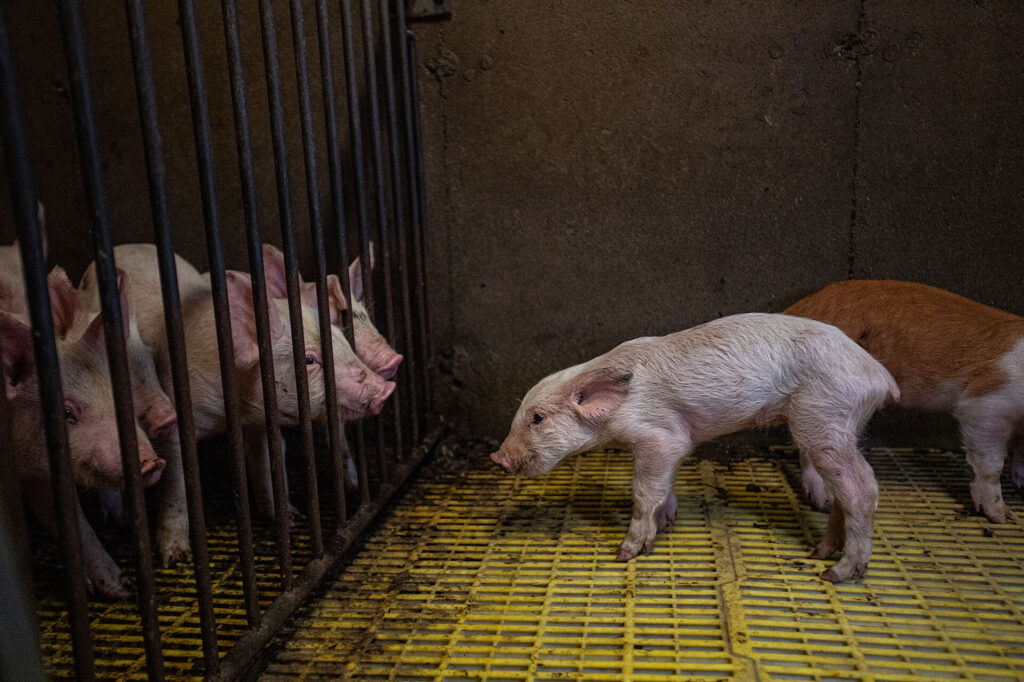
There is also a reason to arrive at a farm unannounced and to document things as we find them. When, as a journalist, you’re invited, you’re likely to see one barn, or even just one part of a barn, one that’s been cleaned up, dead and dying bodies removed, fresh bedding added. When you show up unannounced, which for me is often during an overnight investigation when no one is there, you see things as they are, not a sanitized or presentable version.
Matt: Can you tell us about one time that you felt threatened or challenged as a journalist?
Jo: It’s luck—and a very strict adherence to safety during investigations—that has allowed me to evade direct threats as an animal photojournalist (APJ). Many, if not most, of my investigative colleagues, have faced jail time, fines, as well as physical beatings when found on a farm. I’d rather do my work with full permission and cooperation but that generally does not happen because farms are inherently truly unhappy places for animals. The camera exposes that.
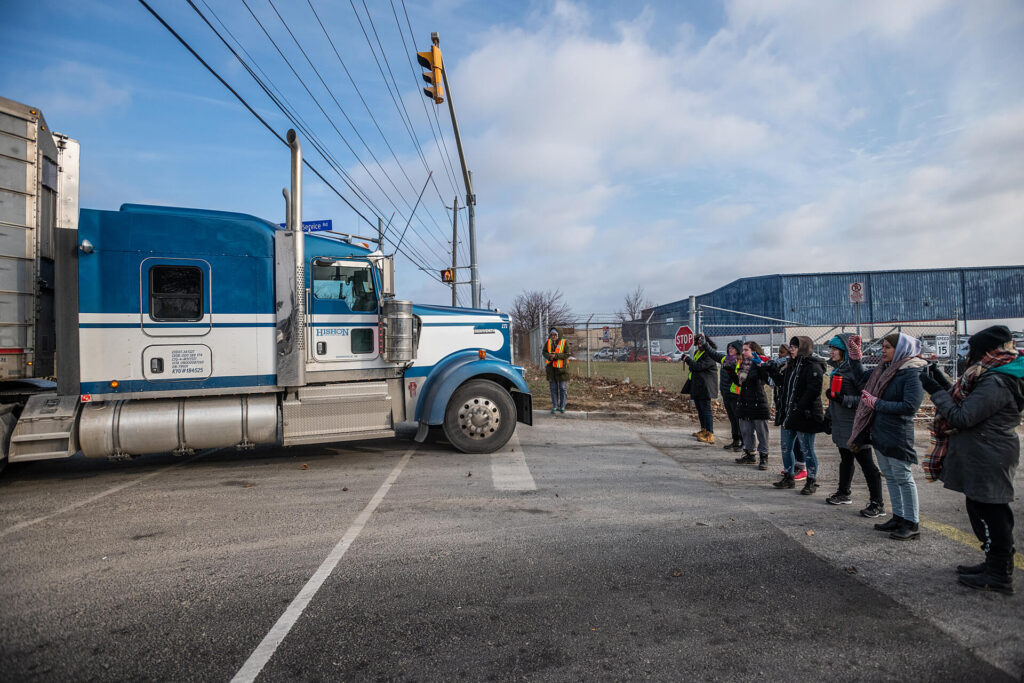
One of the challenges of being an animal photojournalist is that it has historically been taken much less seriously than humanitarian work and conflict photography. So one of the challenges, which We Animals Media (WAM) rises to every day, is to show that the work is relevant and implicating, and can’t be relegated to margins.
Matt: Tell us about one time when you’ve felt excited or empowered as a journalist.
Jo: I’m empowered to do this work every single day. There’s no question. It’s urgent that industrial farming be exposed and drastically curbed; billions of animals are suffering every moment of every day. There are so few people working on exposing and ending factory farming, but that too is changing. APJs work with campaigners, lawmakers, media, and others. Our team at WAM is not only empowered but emboldened to do our work well and increase its scope and its visibility.
Matt: You take a lot of pictures of animals. If they could talk, what do you think they would say?
Jo: When I face animals, and they look back at me, their eyes are almost always asking the same questions. Unless they have lapsed into complete despondency, their expressions ask, what are you going to do to me? They’re fearful, as their experience with humans from the time they are born is one of carelessness and violence. This is no exaggeration. From the time they are born, they are tagged, clipped, cut, taken away from their mothers, tossed about by machines and by us directly, separated, and sometimes killed in front of family or cage mates. What an incredibly sad legacy for us—to be animals that instill fear in all others.
From birth to death, animals in farms have no freedom and no autonomy. They live the most unnatural and unhappy of lives. If animals could talk, they would ask us to leave them be.